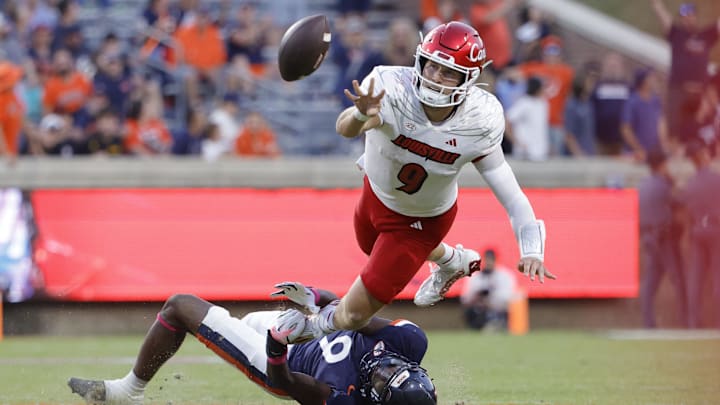A November upset loss to Stanford was a stain on Jeff Brohm’s otherwise successful second season at Louisville. The Cardinals finished the year 9-4 with a Sun Bowl victory over Washington, and their first three losses all came against teams that made the 12-team College Football Playoff: Notre Dame, Clemson, and SMU.
Now, in Year 3, Brohm is looking to elevate Louisville into the upper echelon of the ACC and punch his own ticket to the CFP, but he’ll have to do it with his third different quarterback in three seasons. Tyler Shough finally completed his seven-year collegiate odyssey, becoming a second-round pick of the New Orleans Saints in the 2025 NFL Draft after one stellar season at Louisville, but one of the key areas where Brohm’s team must improve to reach those lofty goals is in the passing game.
Lack of late-down success was holding Louisville back in 2024
One of the easiest ways to measure a quarterback is what they do on late downs in obvious passing situations. Play-action becomes less effective, as the threat of the run game doesn’t loom so large on third-and-six, so late downs are when a QB has to make his money. For as good as Tyler Shough was in 2024, throwing for 3,195 yards with 23 touchdowns to six interceptions, he came up small in those big moments.
Jeff Brohm is one of the best play-callers in the country. He’s constantly putting his quarterback in positions to succeed. That’s evidenced by Louisville’s 96th percentile early-down EPA/play last season, and having two of the most explosive running backs in the country didn’t hurt either.
Yet, with a run game that generated an explosive nearly 10 percent of the time and ranked in the top 30 in success rate, and a quarterback who finished with the third-lowest pressure-to-sack ratio in the entire country last season, Louisville had an average third-down distance of 7.61 yards and a late-down success rate of 39.6 percent (18th percentile).
An effective run game paired with a quarterback who never takes negative plays should result in consistent third-and-manageable situations. But, either because Isaac Brown and Duke Watson ripped off early-down explosives to set up another first-and-10 more often than third-and-2, or because Shough’s aversion to pressure led to too many wasted plays (more on that in a second), Louisville often faced third-and-pass, and Shough didn’t come through nearly enough.
Here, we arrive at the flip side of Shough’s extraordinarily low pressure-to-sack ratio. The former 2018 recruit who backed up Justin Herbert sustained so many injuries across his collegiate career at Oregon and Texas Tech before arriving at Louisville that he was clearly conscious about the threat of another big hit in his final season of eligibility before a potentially large NFL payday. And such, Shough finished the season with the third most throwaways in the country (31).
Tyler Shough might be 25
— Josh Norris (@JoshNorris) April 15, 2025
but his 'throw away' game is that of a seasoned 45 year old pic.twitter.com/2Ek9vOuXCj
Shough was a relatively effective passer under pressure last season, ranking top 20 in yards per attempt, and on true dropback passes without play-action, he completed over 60 percent of his throws with a willingness to push the ball downfield. Yet, his propensity to give up on plays, while it prevented sacks, led to far too low of a late-down success rate, something USC transfer Miller Moss will need to improve greatly upon.
Can Miller Moss provide a solution?
Similarly to Shough, Moss also didn’t take sacks last season, leading the Trojans, before he was benched for Jayden Maiava. Moss was one of the two QBs in the country with a lower pressure-to-sack ratio and did so with 18 fewer throwaways against pressure than Shough.
Moss has his own set of issues, and like Shough, the 6-foot-1 QB has an aversion to pressure, but it instead manifests in an obscenely low 3.07 time to throw when pressured, which is also a reflection of how poor USC’s offensive line was last year.
Moss is certainly not the creative second-reaction playmaker who can solve Louisville’s late-down issues. He refuses to scramble, taking off just once all of last season, and he isn’t a high-level off-platform thrower. However, what Moss is, which could help keep the Cardinals out of third-and-long, is a point-and-shoot passer who can effectively orchestrate an elite play-callers system and consistently make the right decisions in the RPO game.
The loss of Shough will hurt Louisville’s early-down effectiveness and the offense will miss his live arm and out of structure play-making, but if Moss can keep things on schedule with two elite running backs returning for another season, maybe he can stay out of third-and-long enough to keep the offense on the field and take another step toward CFP contention.
